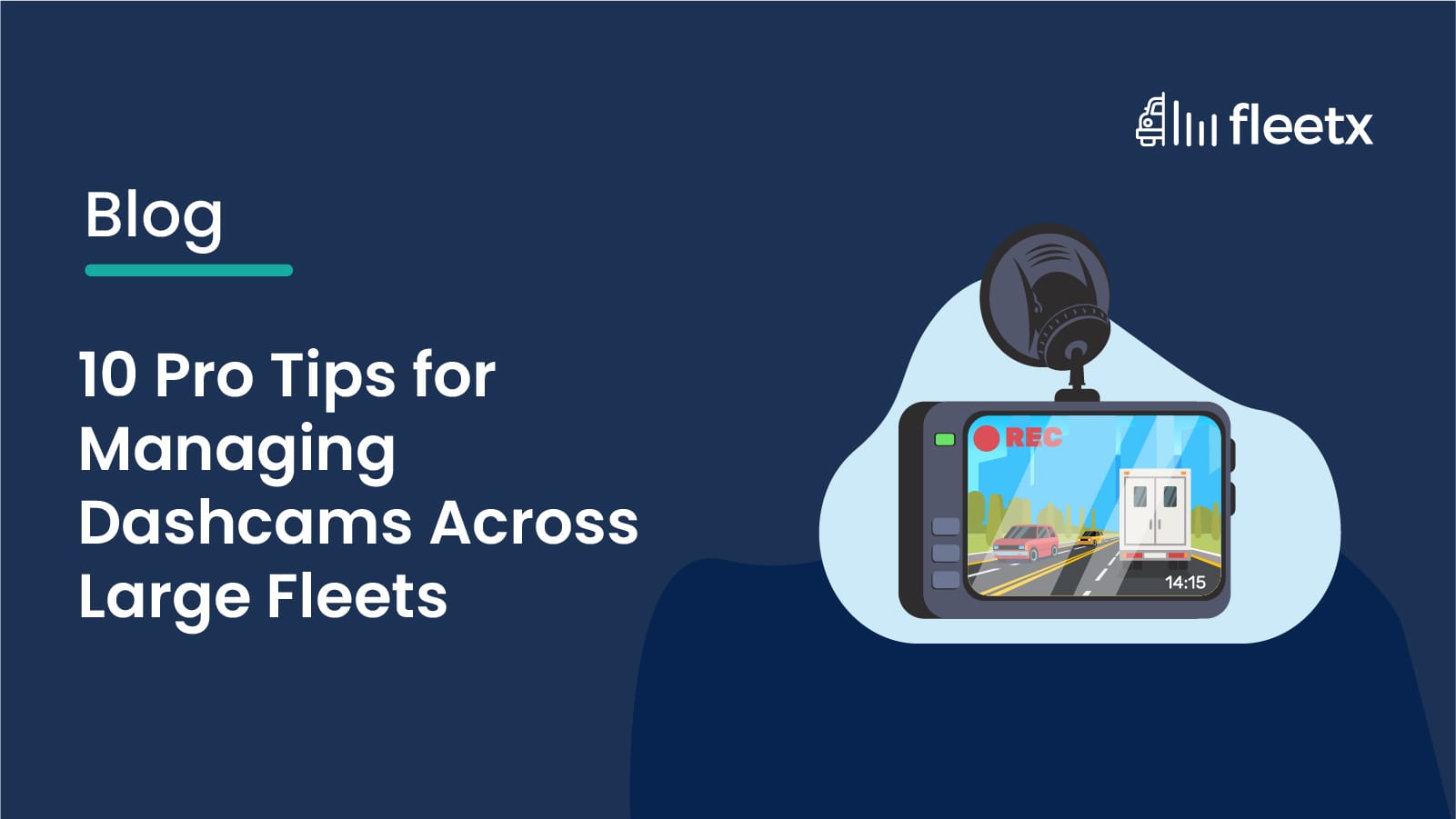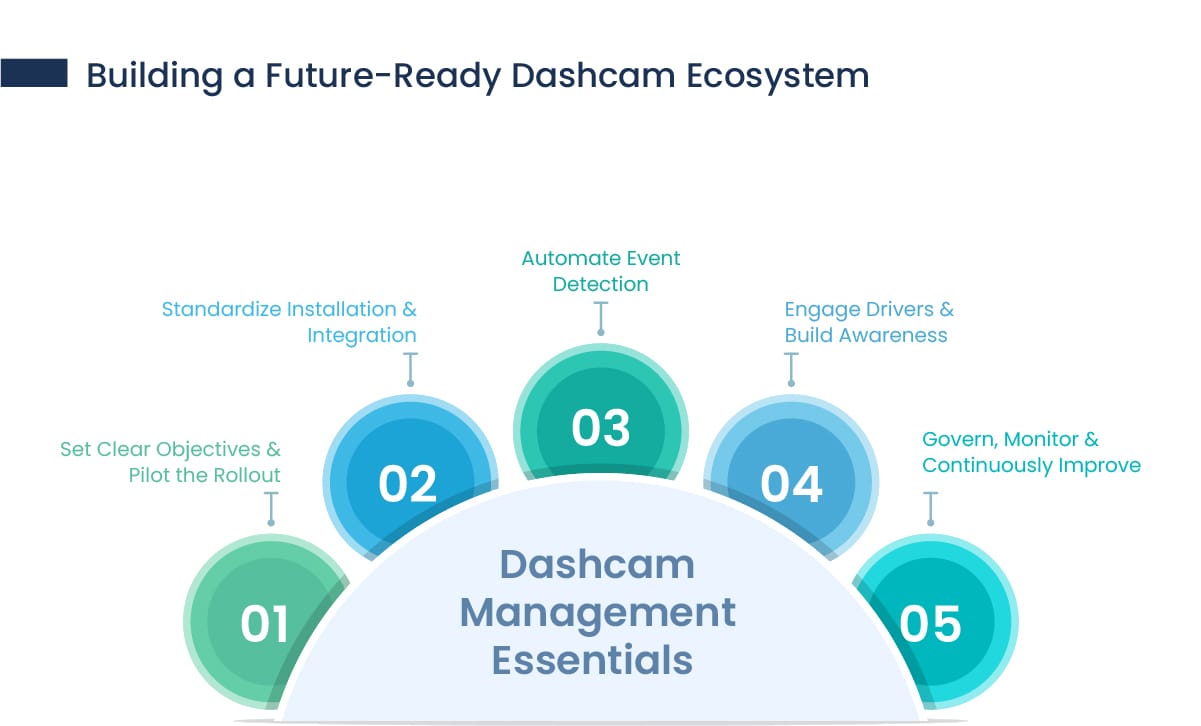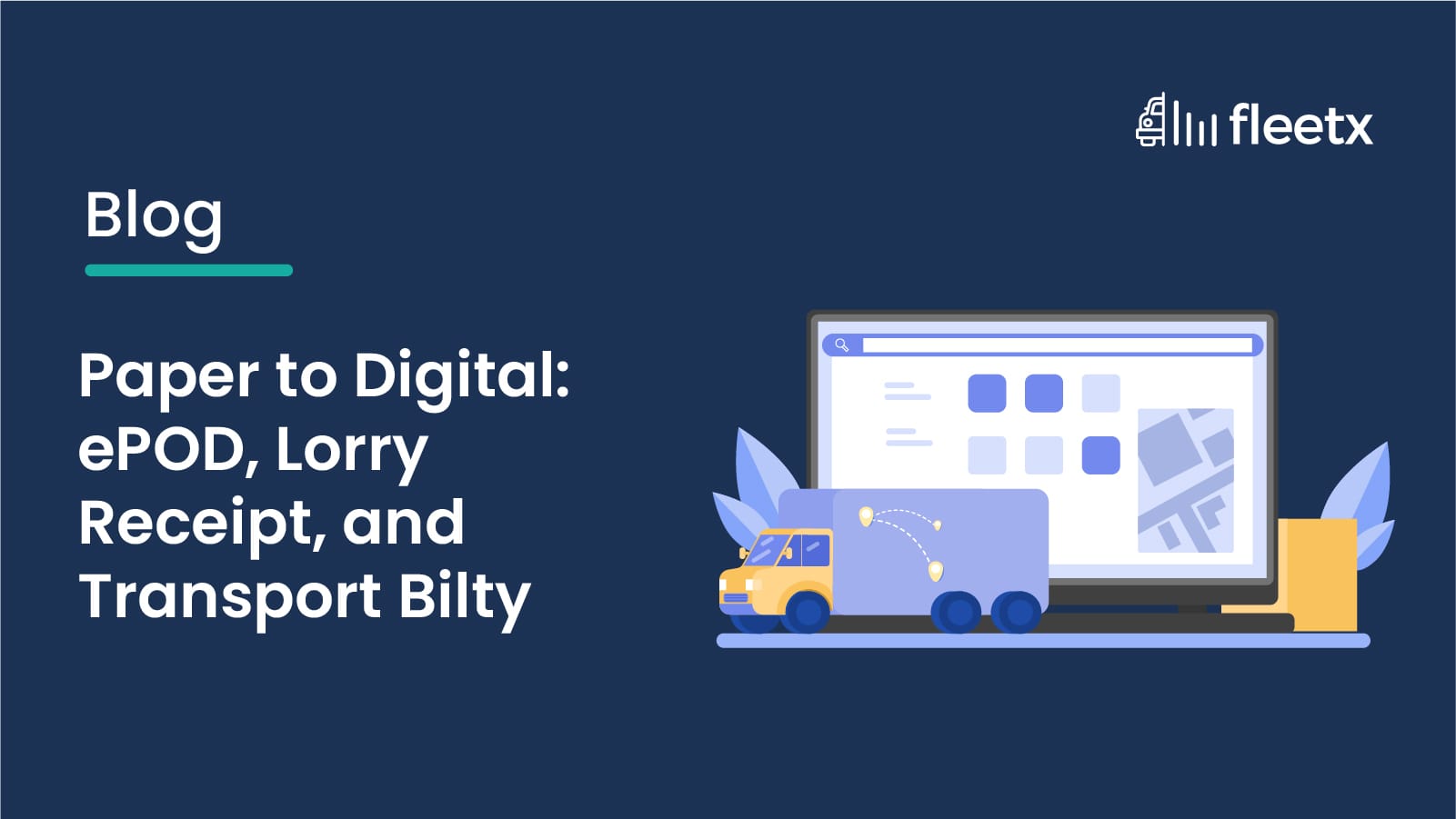
If you manage a large fleet in India, you already know that road unpredictability isn’t a challenge - it’s a way of life. Between reckless overtakes, fatigue-driven errors, and endless accident disputes, fleet managers are fighting fires every day. And while telematics has improved visibility, its video intelligence - dashcams - are redefining how fleets operate, train, and protect themselves.
But scaling dashcams across 100, 500, or 5,000 trucks isn’t plug-and-play. It demands smart management, consistent monitoring, and data discipline. Here, we’ll explore the reality of distracted driving on Indian roads, the ROI of fleet dashcams, and a 10-step playbook to manage them effectively, and more - to gain a broader understanding of Indian trucking conditions.
A Brief Account of Distracted Driving Mishaps
Let’s not sugarcoat it — on Indian roads, distracted driving is one of the biggest culprits. Here are some eye-opening stats:
- Over 1.68 lakh lives lost on Indian roads in 2022 - That’s roughly 460 deaths a day. A massive share of these were linked to human error — mobile phone usage, fatigue, or inattentive driving.
- Nearly 70% of road accidents in India are caused by driver negligence or distraction - Despite vehicle upgrades, it’s the human factor that’s hardest to manage.
- India loses nearly 3% of its GDP annually due to road crashes - That’s not just lost productivity — it’s insurance claims, downtime, damaged cargo, and lost business trust.
For transporters, these numbers hit home. Every incident, even a minor one, triggers ripple effects — FIRs, claim disputes, delayed shipments, driver churn, and client dissatisfaction. And without a dashcam, the blame game never ends.
Benefits of Transitioning to Fleet Dashcams
Let’s get one thing straight — dashcams aren’t about “spying” on drivers. They’re about protecting them, your vehicles, and your bottom line.

Here’s what makes them essential for modern Indian fleets:
1. Real-Time Evidence for Accident Claims
In a country where road rage and false accusations are common, dashcams act as your neutral witness. Fleets using dashcams report faster claim settlements and better legal protection, saving lakhs in annual liability.
2. Enhanced Driver Accountability and Coaching
Video-based feedback allows you to identify risky behavior — harsh braking, phone use, fatigue — and coach drivers constructively. Over time, this improves safety scores and reduces instances of risky driving.
3. Theft and Pilferage Prevention
AI-enabled cargo cameras can detect unauthorized activity in the loading area or inside the container. This helps reduce pilferage — a major pain point for Indian logistics firms handling FMCG or electronics cargo.
4. Operational Visibility and Efficiency
When integrated with telematics, dashcams provide insights into routes, fuel behavior, and idling patterns. Combined with GPS data, they offer a holistic view of both driver and vehicle performance.
5. Improved Insurance and Client Confidence
Fleets that adopt certified dashcam programs often earn insurance discounts and improved client trust — especially with large 3PL contracts, where transparency is a deciding factor.
10-Step Guide for Effective Dashcam Management in Large Fleets
Deploying 1000+ dashcams across Indian highways isn’t just a tech rollout — it’s an operational transformation. Here’s a playbook that works:
1. Define the “Why” Before the “What”
Decide whether your goal is safety improvement, claim reduction, driver analytics, or cargo monitoring. Your objective drives the choice of hardware, storage, and AI analytics.
2. Start Small, Scale Fast
Pilot the solution on 20–50 vehicles across routes with varied conditions (e.g., city, long-haul, mining). Measure video clarity, connectivity, and alert accuracy before going fleet-wide.
3. Standardize Installation and Setup
Ensure consistent camera placement, angle calibration, and firmware updates. A standardized setup means uniform data quality — critical when you’re managing hundreds of vehicles.
4. Integrate With Your Fleet Management System
Choose a cloud-based video telematics platform that syncs seamlessly with your GPS tracking, fuel monitoring, and maintenance dashboards. This centralizes control and simplifies reporting.
5. Automate Event Detection
Manual video reviews won’t scale. Leverage AI-powered event detection for behaviors like tailgating, phone use, yawning, or harsh braking. Prioritize “high-severity” clips for review and coaching.
6. Create Driver Awareness Early
Introduce dashcams as safety partners, not surveillance tools. Use short workshops, incentives, and leaderboards to build trust. Indian drivers respond well to recognition-based motivation.
7. Establish Clear Data and Privacy Policies
Maintain transparency on recording hours, retention duration, and access permissions. Communicate openly to avoid misconceptions or labor pushback.
8. Monitor Device Health Proactively
With India’s dust, heat, and distressed roads, hardware failures are inevitable. Use a dashboard that alerts you to offline devices, tampering, or storage issues in real-time.
9. Use Video Data for Continuous Training
Create a video library of real incidents and near-misses for training sessions. Actual footage resonates more deeply than generic safety slides.
10. Review and Evolve Quarterly
Track metrics like alert frequency, claims settled, and downtime reduction. Optimize camera angles, upgrade firmware, and introduce new AI features as your fleet matures.
When executed right, your dashcam strategy evolves into a live safety infrastructure that continuously learns from on-road behavior.
Best Dashcam Systems for Fleets
Every fleet has different requirements depending on its vehicle type, route profile, and risk exposure. Here’s how the main setups compare — along with a look at Fleetx’s AI-powered system, purpose-built for Indian operations.
Single-Channel Dashcams (Front-Facing Only)
Ideal for small transporters or route operators who need accident evidence but operate on tight budgets. They record the road ahead — useful for claims, but limited in driver monitoring.
Dual-Channel Dashcams (Front + Cabin or Rear)
Perfect for intercity fleets, employee transport vehicles, and long-haul trucks. The second camera helps monitor driver alertness and cabin activity — invaluable for accident analysis or insurance defense.
Multi-Camera Setup (360° View or Cargo Monitoring)
Designed for high-value cargo or complex fleets — such as container logistics, mining tippers, and fuel tankers. Side and rear cameras capture blind spots, helping prevent collisions and theft during loading/unloading.
AI-Powered Dashcams (Video Telematics)
This is where the industry is expanding rapidly. AI-based dashcams not only record but analyze driver behavior in real time — detecting phone usage, fatigue, or unsafe following distances. They send instant alerts, generate automated reports, and allow managers to stream live footage if needed.
Fleetx’s Video Telematics system is one of India’s most advanced AI-powered solutions. It offers:
- Real-time live streaming and playback
- 24×7 surveillance even when the engine is off
- Automatic alerts for distracted or drowsy driving
- Cargo and side-view monitoring
- Cloud storage with instant access to video events
Built for Indian roads — where connectivity drops, traffic is chaotic, and weather swings from dust to downpour — Fleetx’s solution is tailor-made for reliability, scalability, and actionable insights.
The Future of Fleet Safety Is Visual and Data-Driven
Managing dashcams across large Indian fleets isn’t a tech project — it’s a strategic investment in accountability, efficiency, and driver welfare. The ROI is clear: fewer accidents, faster claims, reduced theft, and higher client confidence.
But remember: the magic lies not in the cameras themselves, but in how you manage, analyze, and act on their data. With the right processes, cultural buy-in, and AI support from platforms like Fleetx, your fleet can move from reactive firefighting to predictive safety management.
Because on Indian highways — where every kilometer tells a story — visibility is not just power. It’s protection, profit, and progress.
Why should Indian fleet operators invest in dashcams when telematics already tracks vehicles?
Telematics shows where your vehicle is — dashcams show what really happened. While GPS gives you routes and speed, dashcams add visual context for accidents, theft, or risky behavior. In short, telematics tells you the story outline; dashcams give you the full picture.
How do dashcams help reduce accident-related costs and disputes?
Dashcams act as unbiased witnesses on the road. They provide visual evidence for insurance claims, protect drivers from false accusations, and help fleets settle disputes faster — saving lakhs in liability and downtime each year.
Isn’t installing and managing 1,000+ dashcams too complex for large fleets?
Not if it’s done smartly. With a phased rollout, AI-based event detection, and integration into your existing fleet management system, scaling dashcams becomes manageable. Fleetx’s centralized dashboard, for instance, automates alerts, device health checks, and video reviews.
How can fleets ensure driver acceptance and data privacy when using dashcams?
Transparency and training are key. When drivers understand that dashcams protect rather than police them, adoption rises. Establishing clear data policies — like who can access footage and how long it’s stored — builds trust and compliance across the fleet.






